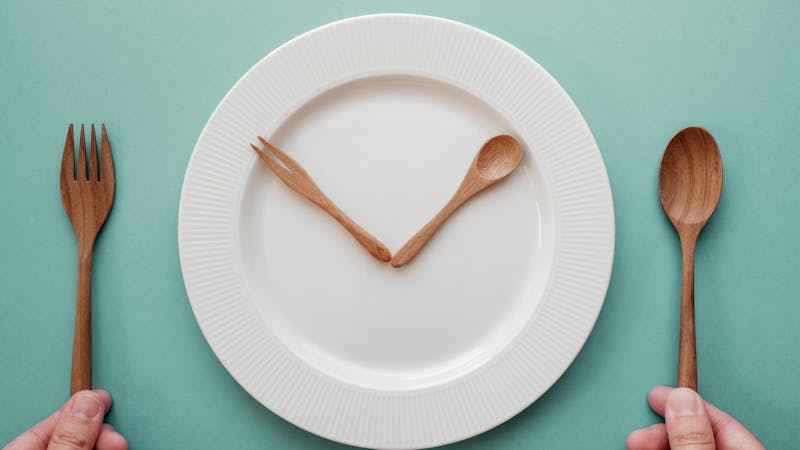Evidence based
Understanding body fat percentage
When measuring your overall health, just stepping on a scale doesn’t tell the full story.
While a body weight scale will reveal your total mass or weight, it can’t tell you if that weight is healthy. To better understand your body — and what it’s made of — the key is to know your body composition and body fat percentage.
In this guide, we’ll take a closer look at body fat percentage. You’ll learn why it’s important to know your percentage, which ranges are considered ideal for men and women, how to lower your percentage, how to measure it, and more.
Keep reading to learn everything you need to know.
The following represents an estimate of the ranges for healthy levels of body fat percentage. We acknowledge that the data supporting these exact levels are weak as they are mostly derived from body mass index.1 However, the numbers provide a helpful framework to understand body fat percentage and risk.
Body fat percentage chart for women
| Women | Low | Good | High | Obese |
|---|---|---|---|---|
| 30-39 | <15% | 15-20% | 21-29% | 30% and above |
| 40-49 | <15% | 15-24% | 25-30% | 31% and above |
| 50 and above | <15% | 15-27% | 28-34% | 35% and above |
Body fat percentage chart for men
| Men | Low | Good | High | Obese |
|---|---|---|---|---|
| 30-39 | <8% | 8-18% | 18-24% | 25% and above |
| 40-49 | <8% | 8-20% | 21-26% | 27% and above |
| 50 and above | <8% | 8-22% | 23-26% | 27% and above |
Key takeaways
Protein for breakfast: Whether eating at home or on the go, start your day with at least 25 grams of protein. Find out howProtein is everywhere: Almost any restaurant or drive-thru has high-protein options. And don’t forget the delicious options at your grocery store. Learn more
Mix and match: A blend of high-protein recipes at home and carefully selected meals out may work best for most people. What to eat
Why knowing your body fat percentage is important


Your overall body composition tells you how much of your weight is made up of fat mass and fat-free mass. Fat-free mass is a combination of muscle, bone, organs, and water.
More specifically, your body fat percentage tells how much of your overall bodyweight comes from fat. Knowing this measurement is important for several reasons.
First, when you lose weight, you want to lose mostly fat and keep most of your lean mass — so your body fat percentage should decrease.
Second, some people may be “normal-weight obese.” This means their overall weight is in the healthy range, but their body fat percentage is elevated — something they will never find out from a standard scale. Studies show that a “normal-weight obesity” pattern quadruples your risk for metabolic syndrome and doubles your risk for heart disease.2
Third, both a higher body fat percentage and lower lean muscle mass are independent risk factors for metabolic syndrome, heart disease, and even dying prematurely.3 So, you’ll be healthier with a lower body fat percentage (to a degree — keep reading for more information).
What should my body fat percentage be?
It’s difficult to define the best body fat percentage for you. The best we can do is estimate a range for ideal body fat percentage; this will vary by age, gender, and ethnicity. It should be noted that most of the data comes from relating body fat percentage to BMI, which may weaken the strength of the data.
The average 50-year-old man should aim for a body fat percentage around 8 to 15%, and the average woman should target 15 to 25%.4 But that doesn’t mean you have to get to the lower end of that range to improve your health.
Not at all.
Experts define obesity as 25% body fat for men and 35% for women. So one important step is to make sure you get below those levels.5
Don’t let a perceived “goal” of 15% for men and 25% for women become discouraging if you struggle to achieve it. If you’re reducing your body fat percentage and are below 25% for men and 35% for women, you’re likely improving your health even if you aren’t at “ideal” levels.6
There’s a lower limit to a healthy body fat percentage, too. There is such a thing as essential fat, and going below 8% for men or 15% for women can cause its own set of health issues.7
What are the different types of body fat?
Not all body fat is the same. You need some body fat for temperature insulation, protecting your organs, and as a fuel reserve. It’s important to make sure you have the right kind of body fat, and not too much or too little of it.
There are three main types of body fat:8
- Essential fat: As the name implies, this type of fat is essential for our everyday functioning. You find essential fat in your brain, bone marrow, and cell membranes.
- Subcutaneous fat: This is the fat found under your skin and is usually located along hips and thighs. Studies show that this type of fat isn’t usually associated with poor health.
- Visceral fat: This type of fat is found in your abdomen or belly and around your internal organs. Visceral fat is the most concerning type of fat. Higher amounts are associated with an increased risk of multiple health issues, including metabolic syndrome, inflammation, heart disease, and even premature death.
A healthy weight loss program will reduce visceral or abdominal fat first, as this will likely lead to the most improvements in metabolic health. While you can’t simply decide which type of weight you want to lose, you can choose lifestyle habits that make you more likely to lose fat mass.
How do I lower my body fat percentage?
You can lower your body fat percentage by either decreasing your body fat or increasing your lean mass. Ideally, you would do both!
Specific dietary interventions to lower your body fat include low-carb eating, lowering calorie intake, and intermittent fasting.9
Higher-protein diets and resistance training are two of the best methods for increasing lean mass.10 And high-intensity interval training (HIIT) is an efficient way to exercise to decrease fat mass.11
Since each of these interventions has beneficial effects on its own, it makes sense that combining them – a low-carb, higher-protein diet with strategic intermittent fasting and a regular exercise program that includes resistance training and HIIT – may be the most effective approach. However, research on this combination is sparse.
You can read more about improving your body composition in our detailed guides on body composition or how to lose belly fat. And you can get started on a healthy exercise program in our Let’s Get Moving course.

How do I measure my body fat percentage?
There are multiple ways to measure your body fat percentage.12 As you’ve already learned, the standard scale is not one of them!
Instead of a regular scale, you can use an at-home bioimpedance scale. Bioimpedance scales are easy to find, although they aren’t as accurate as other measurements.
DEXA is the best method for measuring subcutaneous and abdominal or visceral fat (see more on this below). This method may not be ideal for frequent (less than 6 months) follow-ups because it can be expensive and exposes users to a small amount of radiation.
Water (hydrostatic weight) and air displacement methods (such as the Bodpod) are accurate measurements without radiation, so you can check them more often if you wish.
Skinfold testing is a low-tech method, although it is less reproducible and less effective at telling the difference between abdominal and subcutaneous fat.
For a more detailed look at the various methods of measuring body fat, check out our guide on how to improve and measure your body composition.
How often should I measure my body fat percentage?
There is no absolute answer to how often you should check your body fat percentage, but there are a few things you need to consider:
- What is the cost of the test?
- Is there any radiation involved?
- Has there been enough time for my lifestyle efforts to take effect?
You should start with a baseline measurement prior to starting a new diet or lifestyle intervention. Then, you may want to wait at least four weeks to see if your changes have had a meaningful impact on your body fat percentage. Your results are likely to become more apparent as more time passes.
If you’re checking DEXA scans, you may want to wait four to six months between tests given the small amount of radiation involved.
Know your composition
Knowing your body fat percentage is an important factor in assessing your overall health and progress with healthy weight loss.
Losing weight in a healthy way means losing body fat while maintaining or building your lean mass. A regular scale or BMI calculation doesn’t track this crucial information.
That’s why we recommend you get a baseline measurement and periodically check your body composition and body fat percentage.
Understanding body fat percentage - the evidence
This guide is written by Dr. Bret Scher, MD and was last updated on October 3, 2022. It was medically reviewed by Dr. Michael Tamber, MD on October 3, 2022.
The guide contains scientific references. You can find these in the notes throughout the text, and click the links to read the peer-reviewed scientific papers. When appropriate we include a grading of the strength of the evidence, with a link to our policy on this. Our evidence-based guides are updated at least once per year to reflect and reference the latest science on the topic.
All our evidence-based health guides are written or reviewed by medical doctors who are experts on the topic. To stay unbiased we show no ads, sell no physical products, and take no money from the industry. We're fully funded by the people, via an optional membership. Most information at Diet Doctor is free forever.
Read more about our policies and work with evidence-based guides, nutritional controversies, our editorial team, and our medical review board.
Should you find any inaccuracy in this guide, please email andreas@dietdoctor.com.
Body mass index is a calculation of weight in kilos divided by height in square meters, used to determine if someone is at a healthy weight. For a general population, BMI is fairly good at estimating “normal” or “overweight” values. However, for some individuals, it is less accurate because it does not take body composition into account. Using BMI to help define ideal body fat percentage is not ideal, but for a general population it is likely a good starting point. ↩
The following study reported that normal weight obesity increases the risk of metabolic diseases and cardiovascular mortality. Those with a body fat percentage greater than 23% in men and 33% in women with a normal BMI had a four-fold increased risk of metabolic syndrome and a 2.2 times greater risk of cardiovascular mortality compared to the lower body fat group.
European Heart Journal 2010: Normal weight obesity: a risk factor for cardiometabolic dysregulation and cardiovascular mortality
[observational medical study; weak evidence]And the following shows similarly increased risk of abnormal glucose readings.
BMJ Open 2018: Informational value of percent body fat with body mass index for the risk of abnormal blood glucose: a nationally representative cross-sectional study
[observational medical study; weak evidence] ↩Experimental Biology and Medicine 2018: Body composition and mortality in the general population: A review of epidemiologic studies [overview article; ungraded] ↩
American Journal of Clinical Nutrition 2000: Healthy percentage body fat ranges: an approach for developing guidelines based on body mass index
[observational study; weak evidence] ↩Journal of Clinical Endocrinology and Metabolism 2004: Obesity, metabolic syndrome, and cardiovascular disease
[overview article; ungraded] ↩Current Obesity Reports 2017: Weight Loss and Improvement in Comorbidity: Differences at 5%, 10%, 15%, and Over
[overview article; ungraded] ↩International Journal of Epidemiology 2005: What aspects of body fat are particularly hazardous and how do we measure them?
[overview article; ungraded] ↩International Journal of Epidemiology 2005: What aspects of body fat are particularly hazardous and how do we measure them?
[overview article; ungraded] ↩Frontiers in Endocrinology 2019: Long-term effects of a novel continuous remote care intervention including nutritional ketosis for the management of type 2 diabetes: A 2-Year non-randomized clinical trial [nonrandomized study, weak evidence]
Nutrition and Metabolism (London) 2004: Comparison of energy-restricted very low-carbohydrate and low-fat diets on weight loss and body composition in overweight men and women [randomized trial; moderate evidence]
Journal of Nutrition 2015: A lower-carbohydrate, higher-fat diet reduces abdominal and intermuscular fat and increases insulin sensitivity in adults at risk of type 2 diabetes [randomized trial; moderate evidence]
Journal of Obesity 2014: Lifestyle intervention involving calorie restriction with or without aerobic exercise training improves liver fat in adults with visceral adiposity [randomized trial; moderate evidence]
Journal of Diabetes and Metabolic Disorders 2013: The effects of modified alternate-day fasting diet on weight loss and CAD risk factors in overweight and obese women [nonrandomized study, weak evidence] ↩
A meta-analysis of RCTs demonstrates that eating more protein than average leads to better lean body mass.
Journal of Nutrition 2020 The role of protein intake and its timing on body composition and muscle function in healthy adults: A systematic review and meta-analysis of randomized controlled trials
[strong evidence]Observational studies show those who have greater protein intake have greater muscle mass.
American Journal of Clinical Nutrition 2016: Relation between mealtime distribution of protein intake and lean mass loss in free-living older adults of the NuAge study
[nutritional epidemiology study with HR<2, very weak evidence]American Journal of Clinical Nutrition 2008: Dietary protein intake is associated with lean mass change in older, community-dwelling adults: the Health, Aging, and Body Composition (Health ABC) Study
[nutritional epidemiology study with HR<2, very weak evidence]British Journal of Nutrition 2016: Dietary protein intake is associated with better physical function and muscle strength among elderly women
[nutritional epidemiology study with HR<2, very weak evidence]Journal of Applied Physiology 1985: Effects of aerobic and/or resistance training on body mass and fat mass in overweight or obese adults [randomized trial; moderate evidence] ↩
Journal of Obesity 2012: The effect of high-intensity intermittent exercise on body composition of overweight young males [randomized trial;moderate evidence] ↩
Journal Diabetes Science and Technology 2008: Body composition methods: comparisons and interpretation
[overview article; ungraded]Journal of Investigative Medicine 2018: Advanced body composition assessment: from body mass index to body composition profiling
[overview article; ungraded] ↩








